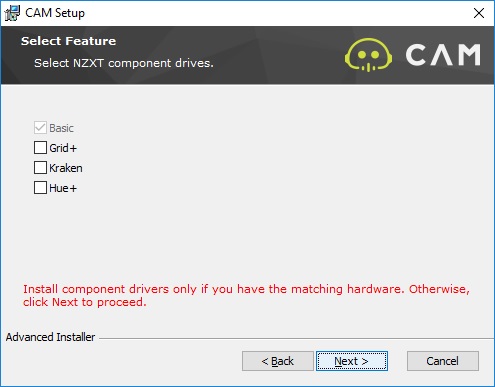Limited Edition. Since launching our first product in 2004, NZXT has delivered affordable premium. We are proud to present a line of limited edition, officially licensed products that showcase our user's enthusiasm for the games they love, built on the foundation of NZXT product design. In this video/tutorial I am showing you guys the CAM Software overlay/Functions and buttons! If you guys have any more questions? NZXT.com Store Returns, Exchange, Parts Policy: Eligible products qualify for a full refund or exchange only with an authorized RMA number and the item is returned to the NZXT.com Store inventory within 30 days of purchase. Returns are not allowed beyond 30 days of the purchase date. The NZXT.com Store reserves the right to deny any return. NZXT gaming PC building solutions include computer cases, water cooling fans, PC lighting kits and much more.
This part is one of the easiest in the entire system building process. SSDs and hard drives only require two types of connectors: data and power. With the advent of M.2, U.2, PCI-e, SATA, and gumstick SSDs, those connection types have changed their interfaces, but still function more-or-less the same.
Most builders will be installing 2.5″ and 3.5″ drives. Hard drives and SATA SSDs generally ship in 2.5” and 3.5” form factors. To install one of these components in your case, simply locate the hard drive cages or SSD mounts, then begin the process of screwing the parts into those mounts.
Some cases, like the NZXT S340 and NZXT H440, will host SSD sleds in separate locations from the hard drive cages. The S340 and H440 both offer installation points on top of the power supply shroud and the rear of the case (behind the motherboard tray). These rear points can be accessed when you’re working on cable management, just by removing the right side panel.
The drives could also be installed into 3.5-only mounts with adapter brackets, but we do prefer the special sleds as the smaller form factor requires less mounting hardware.

How To Install Storage
- Remove the drive tray from the side of the case and attach the HDD or SSD to the tray.
- Re-attach the tray to the case.
- Finally, we connect the SATA data and power cables.
Installing U.2 SSDs
U.2 is a new standard that has begun shipping on motherboards. U.2 looks sort of like a mix of SATA and SAS connectors. The motherboard ports are double-stacked (kind of like a stack of two SATA ports) and use a cable to communicate with the SSD. In this regard, most U.2 SSDs will be cabled and of the 2.5” form factor, which means that they follow the same installation process as the above.
Installing M.2 SSDs

There are several different types of M.2 ports, called “keys.” Some M.2 keys are only compatible with wireless modules and do not carry the bandwidth to drive an SSD. Gumstick M.2 keys and other M.2 keys do allow for SSD comms, though, and are located on the motherboard.
Installing an SSD into one of these slots is more-or-less the same as socketing a device (like a video card) into a PCI-e slot. You slot the SSD into the key, then add one screw to lock it into place.
Installing PCI-e SSDs
Nzxt Driver Error

Nzxt Drivers
PCI Express SSDs are installed by using an add-in card, which sockets into one of the expansion slots of the case. A PCI-e SSD is installed by first removing the expansion slot cover and screw for the desired slot, then dropping the card into place and re-applying that removed screw (to lock the card).
Nzxt Driver Update
Determine which slot is best by checking the motherboard manual. Generally, PCI-e SSDs will use x4 slots (not full-length PCI-e x16 slots), as they only need 4x PCI-e lanes to perform to their fullest potential. – Steve Burke, GamersNexus